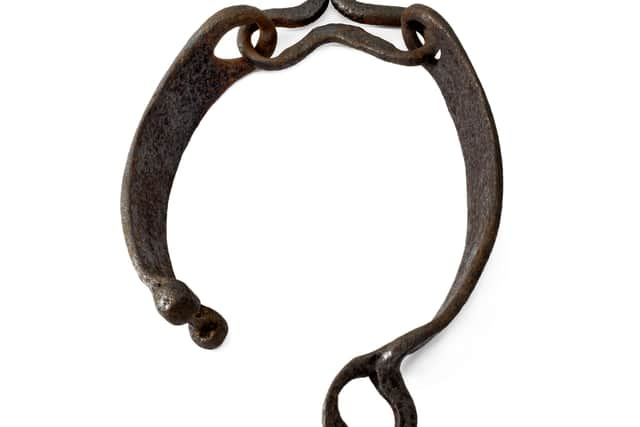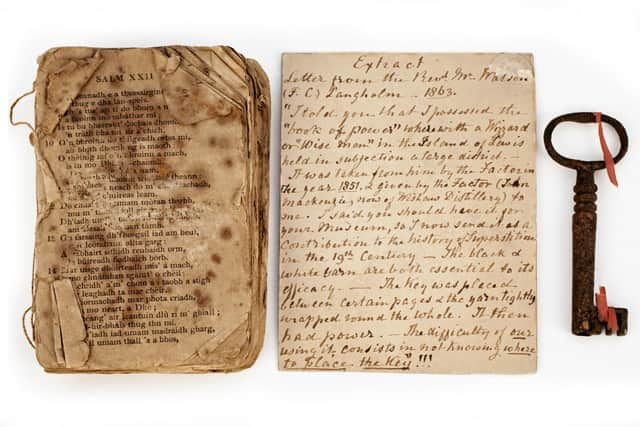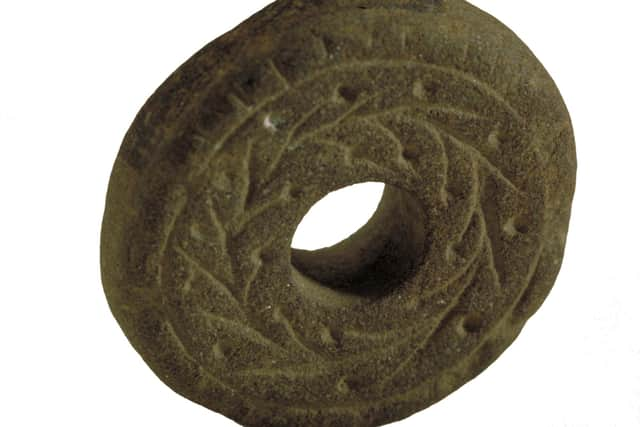Fascinating objects that tell story of Scotland's witch hunts go on show
The objects, which are held in the collections of Aberdeen University, explore the beliefs, suspicions and persecutions associated with the dark chapter in the country’s history, which chiefly unfolded between the 16th and 18th century.
They are now on show in a new exhibition Toil & Trouble: Witchcraft in Scotland, which is accessible online and aims to explore the “gendered violence and oppression, the perceived difference between magic and medicine and the role of the church and religion” in the trials and executions of the period.


Advertisement
Hide AdAdvertisement
Hide AdA known 3,837 people were accused of witchcraft in Scotland between 1563 to 1736, the vast majority of them women.
Lisette Turner, of the design and marketing curatorial team at Aberdeen University, who was involved in bringing together the online exhibition, said: “It was important to me to be able to convey the other sides of witchcraft through its history.
“People often have preconceived notions of haggard women on broomsticks or hexing their neighbours. There is so much more depth to the topic than that.
“We wanted to change that visual representation with this exhibition and focus more on the naturalistic side of the craft and how often it was that 'common' women found themselves in trouble when thought to have toiled in anything seen as unholy.”


The 19th-century prayer book, which comes with an accompanying key, was originally owned by an alleged wizard from the Isle of Lewis, who was said to be the only one who knew how to unlock it and “the mystical power within”.
The book was confiscated from him by his landlord and donated to the university.
A 15th-century spindle whorl is also on show and illustrates the “everyday belief in witchcraft” in Scotland.
Belonging to an Aberdeenshire family, the sandstone whorl is decorated with a feather and dot design on one side, with feathers associated with healing charms which could both ward off evil and be used in curses.


Advertisement
Hide AdAdvertisement
Hide AdA selection of witches stones, small items which feature naturally occurring holes, also feature. They were believed to provide protection to those that found them and were hung from buildings, babies' cradles, and around the necks of livestock to protect against evil spirits.
A set of jougs – a type of iron collar – also features. The heavy item was secured around the neck and fastened to the wall of a church on the 'witches’ ring' via a short chain.
Jougs were used as a punishment for those who had sinned against the church, with their public display serving to remind the congregation to stay on the right side of the law.
Other items in the exhibition, which has been curated by MLitt Museum Studies students at the university, include a 15th-century encyclopedia on medicinal cures prepared from plants, animals and minerals.
Student Caitlin Jamison, who worked on the interpretation for the exhibition, said of the exhibition: “My classmates and I have tried to shape how people understand this important topic. Magic, medicine and religion collide in a way that still has resonance today, which makes it so fascinating to explore.”
A message from the Editor:Thank you for reading this article. We're more reliant on your support than ever as the shift in consumer habits brought about by Coronavirus impacts our advertisers.
If you haven't already, please consider supporting our trusted, fact-checked journalism by taking out a digital subscription.
Comments
Want to join the conversation? Please or to comment on this article.
